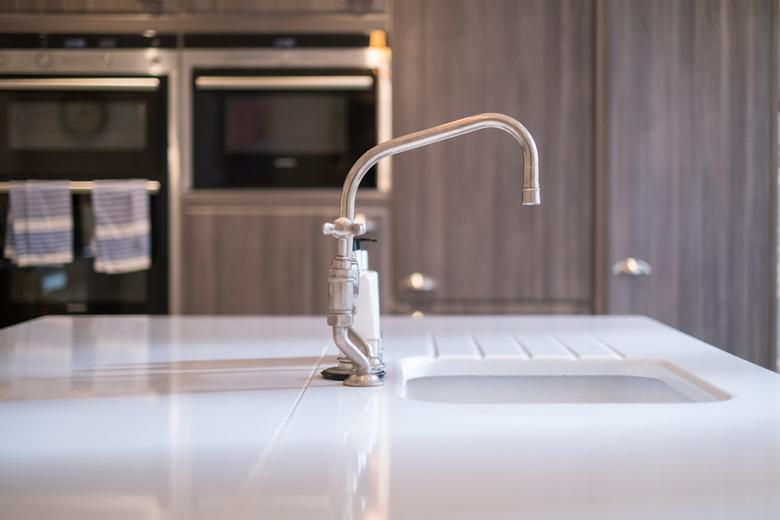How To Repair A Scratched Acrylic Sink
Your household's acrylic sink really goes through a lot in its lifetime. It's one of the hardest working units in your home. So it's no surprise that despite its long-wearing material, over time, it can start to look less than new.
Acrylic is known for its durability, but that doesn't make it totally impervious to damage. Scratches and scuffs are a normal part of an acrylic sink's wear and tear. You may think this is the time to replace your sink, but it doesn't have to be. Most scratches and scuffs to an acrylic sink can be treated at home, giving your older sink a whole new lease on life.
Acrylic Sink Repair Materials
As with any do-it-yourself task, it's important to take adequate safety precautions. You'll be sanding plastic and using potentially hazardous paints, so you'll need good ventilation and certain pieces of safety equipment that'll prevent damage to your skin and respiratory system. Victorian Plumbing recommends using a face mask and wearing gloves when repairing any scratched acrylic unit.
Repairing a scratched acrylic sink can be somewhat of a messy task, so it's also important to protect the surrounding areas of the room. Cover the floor to protect against paint drips and use masking tape to cover areas in and around your sink that you don't want to paint.
To achieve a professional-looking finish on your sink, prep work is key. The repainting won't properly conceal your scratched areas unless you've smoothed them out with fine sandpaper first. You'll also need to prime your sink and then paint to complete the project.
Prep the Sink
First sand the entire surface of your sink. Cut Plastic Sheeting recommends first wetting the surface of your sandpaper to avoid it being too abrasive. It's important to gently sand the entire surface of the sink, not just the scratched area. U.S. Mobile Home Pros explains this is the best way to ensure the new finish will stick properly.
Once you've sanded the surface of your sink, clean your sink thoroughly, focusing on areas with scratches. Any oils, dirt or particles of sanded plastic could prevent your paint from adhering properly. You can use regular dish soap and a soft cloth for this step.
The final stage of prep is applying your primer, making sure you give it adequate time to dry, which you can determine from the product's instructions.
Repairing and Protecting Acrylic Sinks
Miracle Method recommends using acrylic enamel to refinish your scratched acrylic units. You can apply it as a spray or use a kit and apply it with a roller or brush. For best results, choose a paint shade that's as close to the original color of your sink as possible. It's highly likely that you'll need more than one coat of paint to achieve an even, opaque finish. Make sure you leave enough drying time in between layers and give your sink between 24 and 48 hours of final drying time before you start to use it again.
There are specially designed products available to treat smaller areas of scratching, so once you've repaired your sink, you can keep it looking newer for longer. The Plastic People recommend using an acrylic polish on your sink to help protect it from future scratching.
References
- Victorian Plumbing: How to Paint an Acrylic Bath
- Cut Plastic Sheeting: How to Remove Scratches From Plastic
- U.S. Mobile Home Pros: Do's and Don'ts for Painting a Plastic Tub in a Mobile Home
- Miracle Method Surface Refinishing: Plastic Tub Refinishing
- The Plastic People: How to Remove Scratches From Acrylic
